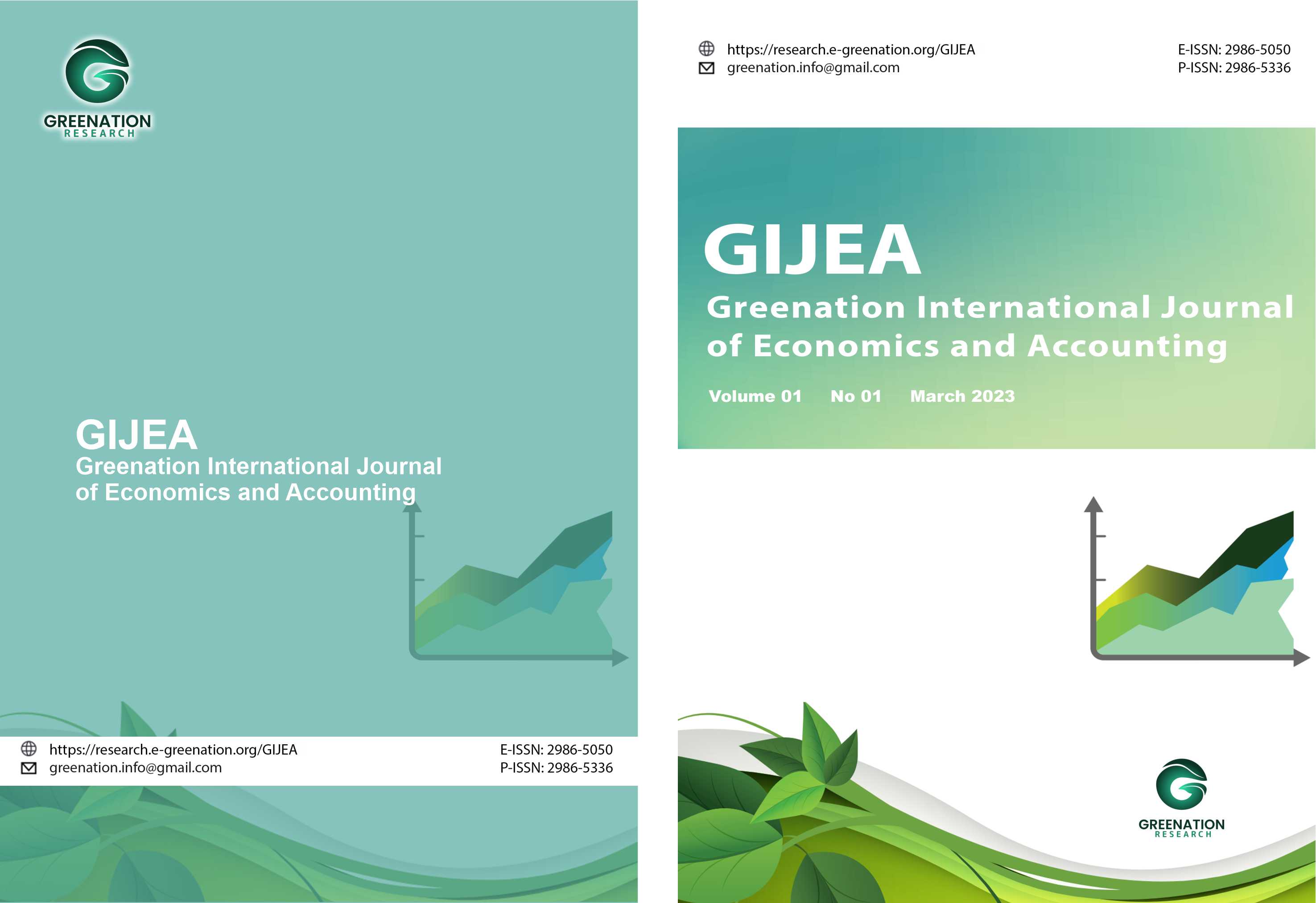The Role of Employee Performance, Leadership, and Workload on Job Satisfaction (Literature Review Human Resource Management)
DOI:
https://doi.org/10.38035/gijea.v2i3.302Keywords:
Employee Perfomance, Job Satisfaction, Leadership, Workload.Abstract
Literature Review The Role of Employee Performance, Leadership and Workload on Job Satisfaction is a scientific article with the aim of analyzing whether employee performance, leadership and workload influence job satisfaction. A qualitative approach method using a literature review method to explore and analyze the relationship between leadership, workload and job satisfaction. The results of this article are: 1) Employee Performance plays a role in Job Satisfaction, 2) Leadership plays a role in Job Satisfaction; 3) Workload plays a role in Job Satisfaction. Apart from these 3 exogenous variables which influence the endogenous variable Job Satisfaction there are many other factors including motivation, environment, organizational culture, training.
References
A.A. Anwar Prabu Mangkunegara. 2007. Manajemen Sumber Daya Manusia Cetakan Ke Tujuh. PT. Remaja Rosdakarya: Bandung.
Ali, H., Limakrisna, N., & Jamaluddin, S. (2016). Model of customer satisfaction: The empirical study at Bri in Jambi. International Journal of Applied Business and Economic Research.
Andika, R. (2019). Pengaruh Motivasi Kerja dan Persaingan Kerja Terhadap Produktivitas Kerja Melalui Kepuasan Kerja sebagai Variabel Intervening Pada Pegawai Universitas Pembangunan Panca Budi Medan. Jumant, 11(1), 189–206.
Astuty, P. and Zuniasih, D. (2018) ‘Pengaruh Gaya Kepemimpinan dan Pengembangan Karir Terhadap Kepuasan Kerja Serta Implikasinya Terhadap Kinerja Karyawan (Studi Kasus Pada Karyawan PT.EMSONIC Indonesia, Cibitung Jawa Barat)’, Jurnal Manajemen, 06(1A), pp. 38–52. Available at: https://ejournal.borobudur.ac.id/index.php/manajemen/article/view/653.
Carvalho, A. da C., Riana, I. G., & Soares, A. de C. (2020). Motivation on Job Satisfaction and Employee Performance. International Research Journal of Management, IT & Social Sciences, 7(5), 13–23.
Feel, N. H., Herlambang, T., & Rozzaid, Y. (2018). Pengaruh disiplin kerja, budaya organisasi dan lingkungan kerja terhadap kinerja pegawai. Jurnal Penelitian Ipteks, 3(2), 176–185.
Hermina, U. N., & Yosepha, S. Y. (2019). The Model of Employee Performance. International Review of Management and Marketing, 9(3), 69–73
Hermingsih, A., & Purwanti, D. (2020). Pengaruh Kompensasi Dan Beban Kerja Terhadap Kepuasan Kerja Dengan Motivasi Kerja Sebagai Variabel Pemoderasi. Jurnal Dimensi, 9(3), 574–597.
Husadha, C., Zen, A., & Panjaitan, E. (2014). Pengaruh Penjualan Bersih, Beban Pokok Penjualan, dan Beban Usaha Lainnya Atas Output Laba Bersih PT Indofood Sukses Makmur Tbk. Jurnal Ilmiah Akuntansi Dan Manajemen, 10(2), 8–21.
Romadhon, A. R., Mochklas, M., & Hadi, S. (2023). Dampak pemberian kompensasi dan beban kerja terhadap kinerja buruh panen kelapa sawit di desa sigenti selatan 1,2,3. Improvement: Jurnal Manajemen Dan Bisnis, 3(2), 3(2), 161–169.
Setiyanto, A. I., & Hidayati, S. N. (2017). Pengaruh kepuasan kerja dan komitmen organisasi terhadap turnover intention. Jurnal Akuntansi, Ekonomi Dan Manajemen Bisnis, 5(1), 105–110.
Sudiantini, D., Umar, H., & Arafah, W. (2019). The Influence of Strategic Leadership Competencies and Organizational Culture on Public Service Performance with Work Climate as a Moderation Variable in Banten Provincial Government ( in Lebak Regency , Pandeglang Regency , Serang Regency ). International Journal of Creative Research and Studies, 3(10), 92–98.
Downloads
Published
How to Cite
Issue
Section
License
Copyright (c) 2024 Reni Silviah

This work is licensed under a Creative Commons Attribution 4.0 International License.
Copyright :
Authors who publish their manuscripts in this journal agree to the following conditions:
- Copyright in each article belongs to the author.
- The author acknowledges that the GIJEA has the right to be the first to publish under a Creative Commons Attribution 4.0 International license (Attribution 4.0 International CC BY 4.0).
- Authors can submit articles separately, arrange the non-exclusive distribution of manuscripts that have been published in this journal to other versions (for example, sent to the author's institutional repository, publication in a book, etc.), by acknowledging that the manuscript has been published for the first time at GIJEA.

























